Automotive Meets Additive Manufacturing
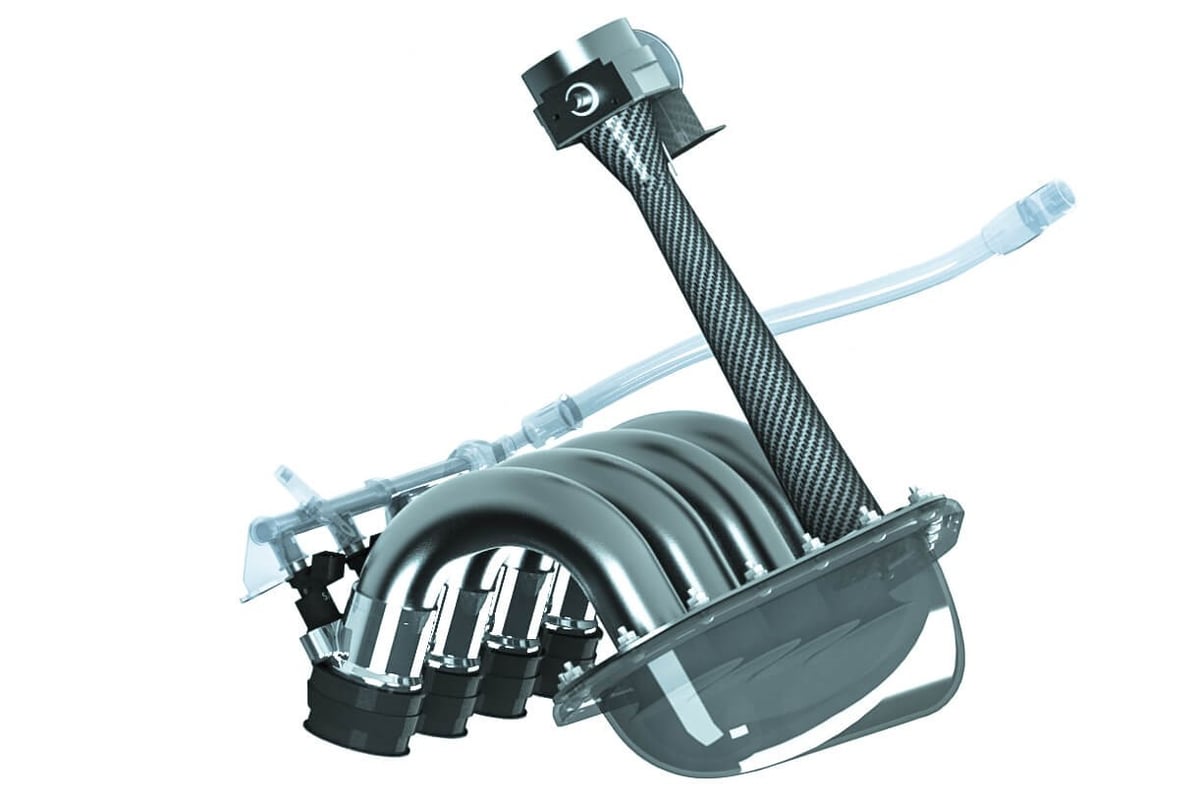
The automotive industry is one of the most rapidly changing markets. With many concepts in the development stages, market participants are constantly in search of efficient technologies. To help them stand out, most automotive manufacturers invest in a variety of areas, including design software, manufacturing techniques, improved facilities, and new employee skill sets.
Of these, 3D printing represents a technology that has captured a great deal of interest. This is mainly attributed to the technology’s ability to quickly produce complex and custom parts. However, other intriguing factors include optimized design, sped up tooling cycles, and customized solutions across value chains in vehicle development.
For all of these reasons, automotive was one of the first industries to heavily adopt 3D printing to advance design and enhance productivity on the shop floor. By integrating 3D printers into the production line, part production, acquisition, and repair are much quicker.
Under the Microscope
In this article, we’ll focus on a particularly popular vehicle component: intake manifolds. Despite their complicated nature and crucial contribution to vehicle performance, 3D printing is already being applied in the design and creation of these parts.
Following a more detailed look at the advantages, we’ll find out who’s participating in this movement and what exactly they’re creating.
Benefits to Part Performance
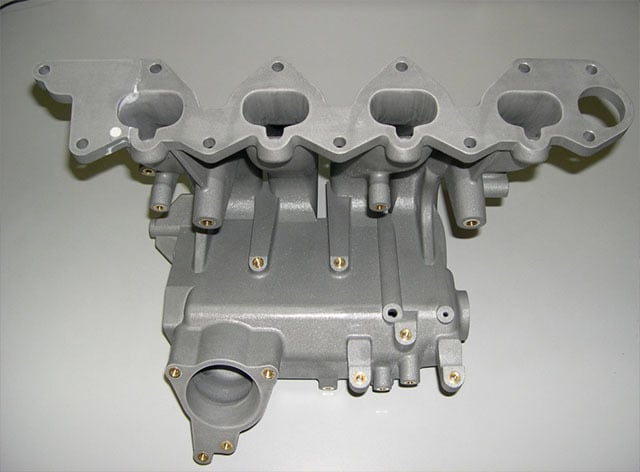
Generally speaking, the main benefits of adopting 3D printing in the automotive sector are the following:
- Simplified and accelerated part design, especially of complex parts
- Fewer production steps and reduced production costs
- Reduced turnaround time
- High level of part customization
- In many cases, a reduction in part weight
- Easier acquisition of tools, molds, jigs, and fixtures
So what is it that has automakers specifically focusing on redesigning the intake manifold? Why are they using 3D printing? Is this new approach a performance altering agent for an automobile?
In Manifold Terms
The intake manifold handles the flow of the fuel and air mixture, which is the main element required for a vehicle to function. Adjusting the design of this particular part can therefore significantly influence the horsepower, potentially bringing it to a much higher level.
The design of an intake manifold is quite complex, and production involves assembly and welding of several components to obtain the final part. Enthusiastic drivers and automotive companies keen on delivering high-performance vehicles have thus directed their attention towards using 3D printing solutions for improved results.
Let’s take a look at how some of the major automotive companies and racing teams have adopted 3D printing to ramp up their position in the market.
Arizona State University

Though automotive parts are commonly fitted with metal components, the idea of using thermally and mechanically strong alternatives has recently gained a lot of attention. In particular, academics and researchers have been studying and testing thermoplastic and thermosetting materials.
Ultem 9085 is one such high-strength, flame-retardant thermoplastic. Produced by Sabic, it’s mainly used in tooling, end part production, and prototyping.
A professor from Arizona State University, Dr. Bhate, was intrigued by Ultem. In particular, he wanted to know how printing with the material could be best optimized for complex parts.
As is commonly known, printing with FDM and resin often requires support structures. Unfortunately, apart from increasing waste material, properly removing supports and perfecting the final model can sometimes require post-processing operations. Dr. Bhate, therefore, performed a case study to minimize these efforts while establishing the worth of Ultem.
Using the FDM Stratasys Fortus 400mc, Ultem 9085, and the existing CAD design of an intake manifold from the ASU SAE team, the 2016 study focused on optimizing process parameters.
Among other steps, several design iterations were undertaken using the Insight design software, and a suitable part orientation was obtained. Furthermore, to ease support removal, a box-type support structure was used. The end result was a fully-functional (and beautiful) intake manifold that could be directly interfaced with the SAE team’s engine.
Hornet Racing, CSU
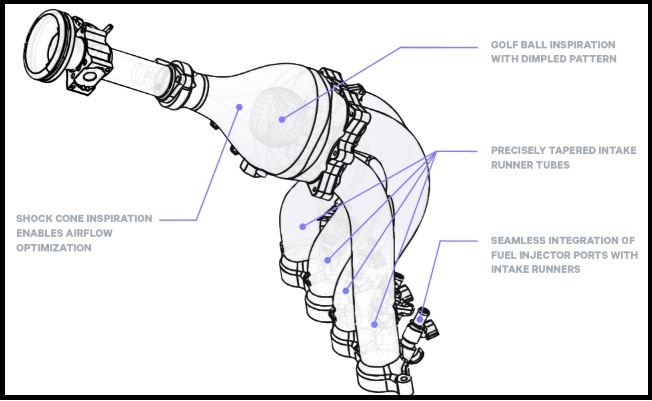
The Hornet Racing team from California State University, one of the participants in the Formula SAE, collaborated with Carbon in 2017 to improve their vehicle’s engine performance. The idea was to use 3D printing to reinvent and redesign the intake manifold.
The main challenge faced by the team was poor airflow, which caused lower engine performance. This issue is normally attributed to the welding of numerous small components, which often results in problems with power delivery.
The manifold was redesigned to be produced using Carbon’s digital light synthesis (DLS) technology. In this process, an LED light engine projects a sequence of UV images through the bottom of a resin-filled vat. The images exposed are cross-sections of the part to be printed, and the photosensitive resin cures into a solid.
As you might expect, this process alone doesn’t result in a fully-functional part. Following printing, the part is baked in a thermal bath, which sets the mechanical properties of the part by triggering a chemical reaction. This causes the material to strengthen, achieving the desired final properties.
Using the Carbon DLS technology, Hornet Racing was able to obtain a fully-customized manifold with minimal welds. The result was a consistent and optimal flow of air and fuel, maximizing the engine’s performance. As an additional benefit, the revamped design was able to achieve a 50% weight reduction by replacing aluminum with rigid polyurethane, a strong and heat-resist plastic.
Tecnun School of Engineering
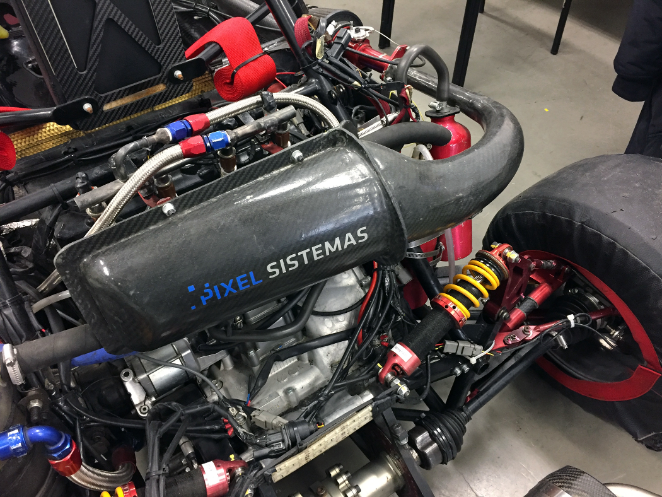
In 2018, students from the Tecnun School of Engineering at the University of Navarra, Spain, sought to simplify and alter the design of their race car. To do this, they turned to 3D printing, leveraging its capability to minimize manufacturing while retaining part strength, structure, and durability.
In line with this decision, the team decided to replace aluminum with a carbon fiber composite to reduce the overall weight of the manifold.
Sponsoring Tecnun in this endeavor was Stratasys, who offered the use of the Fortus 450mc printer and two materials: a carbon fiber composite for the manifold and ST-130 for sacrificial tooling. The latter was used as a support material in empty regions, as it can be easily broken or washed away.
Thanks to the ST-130, the team was able to create complex structures with a lead time of about five hours (compared to the weeks such a project might otherwise have taken). The final part was able to withstand 121 °C at a 60% reduction in weight, thus greatly improving part performance.
Briggs & Stratton
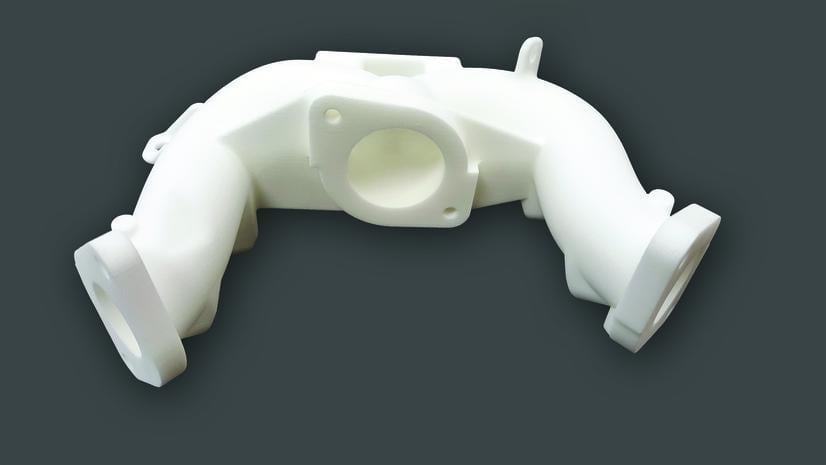
Briggs & Stratton is one of the largest manufacturers of engines and yard equipment in the United States. Acquiring a selective laser sintering (SLS) printer from 3D Systems in 2015, the company’s research and development team looked ot test their new and upcoming product durability. In particular, they wanted to overcome challenges presented by conventional CNC machining, casting, and other manufacturing techniques.
Among other tests, the team made use of 3D System’s DuraForm ProX PA to create an epoxy-sealed V-twin intake manifold. The polymer’s high strength and malleable properties made printing the complex thin-walled structured relatively painless. Some of the sections were only 0.8 mm thick and were still durable and flexible.
Once the V-twin manifold was printed, it was tested at high temperature environment for more than 2,000 hours for design fit and performance analysis. This enabled the firm to achieve numerous requests for complex components over the years.
Orion Racing
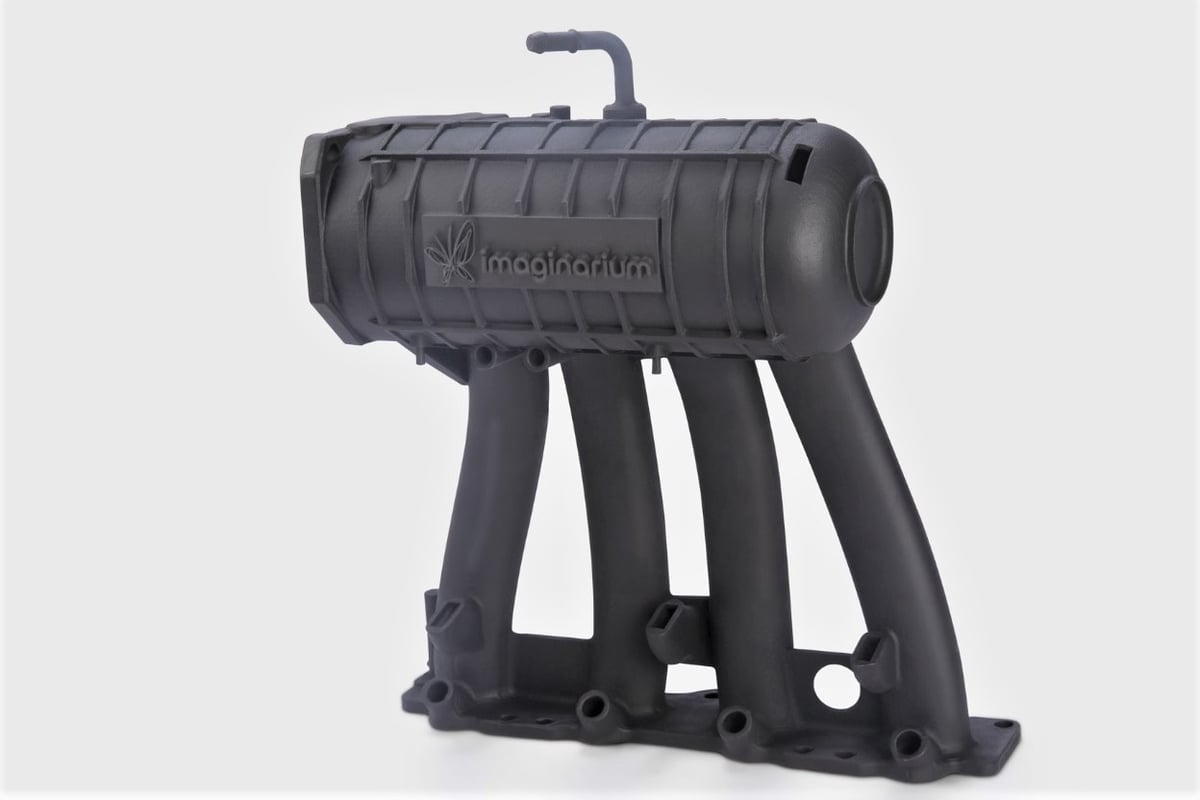
Orion Racing was one of the first racing teams in India to have replicated the carbon fiber chassis of a Formula 1 car using 3D printing. After being told their intake manifold design was too complex, the team turned to 3D printing service Imaginarium.
The aim of the project was to print an aerospace-grade engine chassis that would enable the team’s race car to achieve 0-100 km/h in 4 seconds. Imaginarium considered the aim and offered to develop the manifold and chassis using a single-stroke manufacturing technique. This was to avoid the multiple smaller components joining.
The parts were printed in PA 12 nylon on the Sinterstation HiQ, an SLS machine. Thanks to this precise technology, the results were strong, durable, and detailed, allowing for easy fit and assembly.
As expected, the new manifold meant the race car benefited from an overall weight reduction. This enabled the Orion Racing team to position themselves well against their competitors.
Papadakis Racing
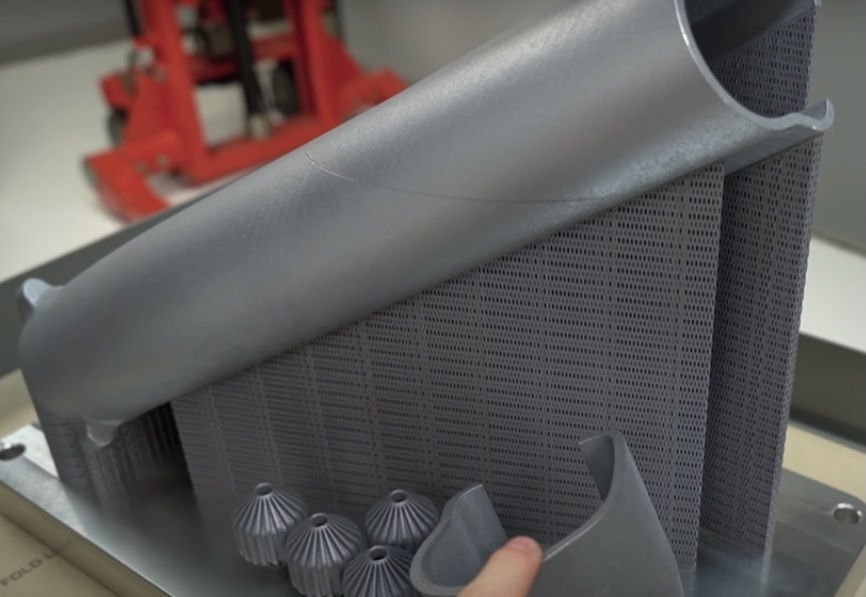
Last year, Papadakis Racing used the in-house selective laser melting (SLM) services offered by Mimo Technik in California. The collaboration combined the aluminum capabilities of their M 500 machine with the CAD specifications provided by Papadakis Racing. The goal? To test the 3D printed manifold on a Toyota Supera with a 1,000-hp engine.
The M 500 works by first setting down a layer of thick aluminum powder. Then, using a guided laser, the powder is selectively melted and bound to form the successive layers of the model.
In total, it took approximately 51 hours to print the part that included all the necessary components. Post-processing included cleaning and removing structural supports.
As you probably guessed from us including this project in the list, the design was successful. Measuring performance using a dynamometer, the engine was able to reach 1,000 hp.
Lead image source: PapadakisRacing via YouTube
License: The text of "Incredible Prints: Can You 3D Print an Intake Manifold?" by All3DP is licensed under a Creative Commons Attribution 4.0 International License.